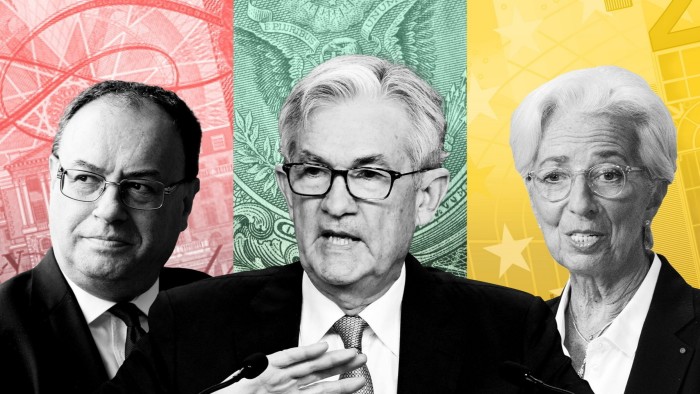A defining moment for central banking


Roula Khalaf, Editor of the FT, selects her favourite stories in this weekly newsletter.
The writer is president of Queens’ College, Cambridge, and an adviser to Allianz and Gramercy
June was an extraordinary month for the central banking world, one that could potentially be remembered as a defining moment for the credibility of central banking in advanced countries. It is likely to be significant for the political autonomy of individual central banks and the prospects for inflation, growth and inequality.
Rarely do we witness such a combination of events within a few days. The Bank of England, a major central bank, surprised markets by increasing its interest rates for the 13th consecutive time by an unexpectedly large 0.50 percentage points.
The European Central Bank raised rates and signalled more to come despite the eurozone economy shrinking and cautionary signals from leading indicators. The central banks of Australia and Canada, both closely monitored for their monetary policy insights, resumed rate increases after a pause in their tightening cycles. Smaller central banks in Norway and Switzerland continued on their path of raising rates. And Turkey’s new central bank leader boldly shifted away from the puzzling monetary policy stance advocated by the country’s president, raising rates sharply.
In contrast, the US Federal Reserve chose not to raise rates, despite officials increasing their inflation forecasts and guiding markets towards an extended period of higher interest rates.
This combination of events is far from ordinary. In the context of a two-year battle against inflation, it presents a confused and confusing situation that casts an uncomfortably bright spotlight on central banks, both individually and as a collective. Many are now drawing the ire of impatient politicians and ordinary citizens pressured by higher prices and mortgage rates.
The theme underlying all these developments is the persistence of inflation. That has led to a consensus among central banks that interest rates must remain elevated for a longer duration. Even the Fed’s pause is viewed by most as only a temporary break before a resumption of rate rises.
What makes this situation even more unusual is that it comes after one of the most concentrated hiking cycles in decades. Consequently, yield curves in several government bond markets indicate that investors increasingly anticipate a period of stagflation — where an economy is characterised by stagnant growth and still high inflation. For instance, with its recent leg up, the US two-year yield trades at an astonishing 1 percentage point above the 10-year bond benchmark, indicating investors’ willingness to accept substantially lower returns for an additional eight years.
This not only amplifies the focus on central banks but fuels a blame game that undermines the political autonomy desperately needed to restore policy effectiveness and public credibility. Moreover, it diverts attention from the fact that central banks, acting alone, cannot address all the challenges of the current policy trilemma: maintaining low and stable inflation, fostering robust and inclusive growth and ensuring financial market stability. As noted in the recent annual report of the Bank for International Settlements, countries may already be “testing the boundaries of what might be called the region of stability”.
Unfortunately, central banks bear significant responsibility for this situation, and it could become even more problematic if there is a reignition of what has been steadily moderating goods inflation while services inflation remains unconquered.
While the focus on central banks is understandably intensified, resolving the policy trilemma for many countries is no longer solely within their narrow purview. Two additional initiatives are urgently needed:
First, a highly co-ordinated policy approach, one that maintains fiscal stability while, critically, significantly enhancing supply responsiveness, productivity, labour market functioning and regional/global policy co-ordination.
Second, there should be a comprehensive top-level review of some central banks by independent bodies appointed by governments. That should encompass their policymaking processes as well as looking, in some important cases such as the Fed, at outmoded policy frameworks and target setting, the lack of cognitive diversity and poor accountability. Such a comprehensive, remedial approach is essential if central banks are to do their bit in much-needed multi-agency efforts to deliver long-term economic prosperity, social wellbeing and genuine financial stability.
Comments